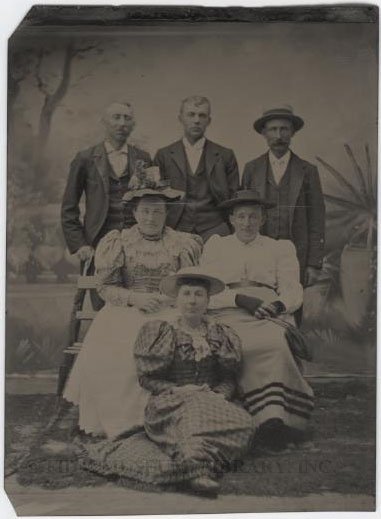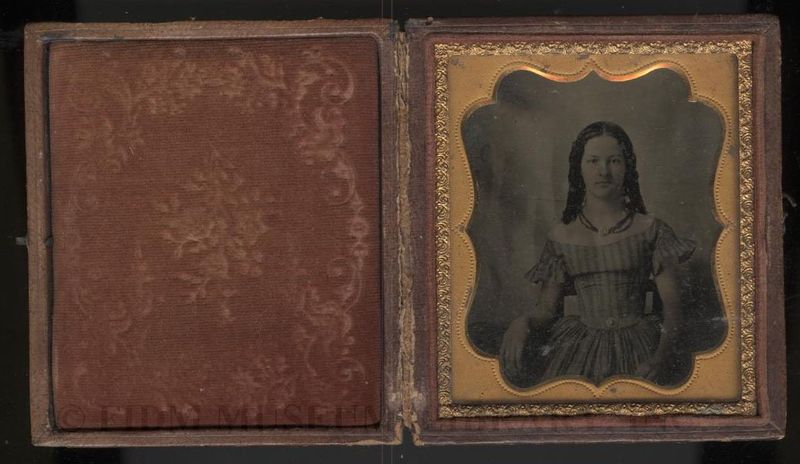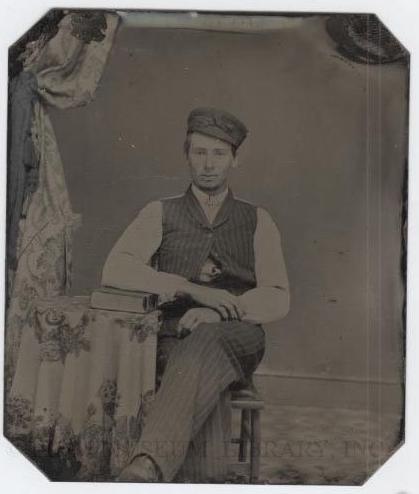Fashion history through photographs, part I
Today's post was written by Christina Johnson, FIDM Museum Collections Manager. Part II will be posted on Wednesday, December 9. Enjoy!

Tintype c.1895-1897 Gift of Stephen Porterfield 2009.897.74
Photographic portraits are valuable resources for understanding fashion history. Knowing the dates certain photo techniques were used can help date extant objects. These images also reveal a great deal about how clothing was accessorized and styled. They present a less-idealized version of dress than fashion plates or painted portraits. The FIDM Museum actively collects historic photographs for these reasons.

Daguerreotype c.1854 FIDM Museum Purchase 2009.5.46
The first viable form of portrait photography in the United States was the daguerreotype-- a silver-plated sheet of copper, sensitized with iodine. The process was used for portraiture from 1839 through the late 1850s. This young woman sat for her daguerreotype portrait in about 1854. She wears a light-colored cotton gown, perhaps muslin, with a dark lace jacket. A gold chain, likely affixed to a watch or pencil, is looped around her neck, passed under a portion of her scalloped whitework collar, and secured at her wide checked belt with central round buckle. Her bonnet is set fashionably back on the head and is decorated with ribbons and flowers-probably pinned in place by the woman herself.
 Ambrotype c. 1858 Gift of Stephen Porterfield 2009.897.139
Ambrotype c. 1858 Gift of Stephen Porterfield 2009.897.139
The ambrotype was produced from 1854 to about 1870. In this process, a glass plate is coated with collodion and exposed to light in the camera. Ambrotypes were less expensive than daguerreotypes -- making this type of portrait available to a wide socio-economic section of the population. The girl who sits for this hand-tinted ambrotype wears a day dress of silk taffeta printed with vertical stripes. The ridge of her corset is visible just below the bust. She wears a red bead necklace, probably of coral, which was thought to have protective qualities for children. A metal mesh belt with round buckle encircles her waist. Her hair is arranged in the youthful fashion of corkscrew curls.

Tintype c. 1860 Gift of Stephen Porterfield 2009.897.60
The tintype process was widely used from 1854 to the 1890s. The word “tintype” to describe these images is a misnomer as they are not tin--they are lacquered squares of iron. They can be understood as a cheaper version of the ambrotype and were often slipped into decorative paper frames. This tintype shows a man from the working class and dates from about 1860. Appearing without a jacket creates a more informal portrait. The man’s vest and trousers, of pin-striped wool, may be an early example of the emerging ready-to-wear menswear market. Fashion imperfections are readily apparent in photography. Here, the man’s shirt gaps between buttons, exposing his skin. He has chosen to wear his cap jauntily to one side.